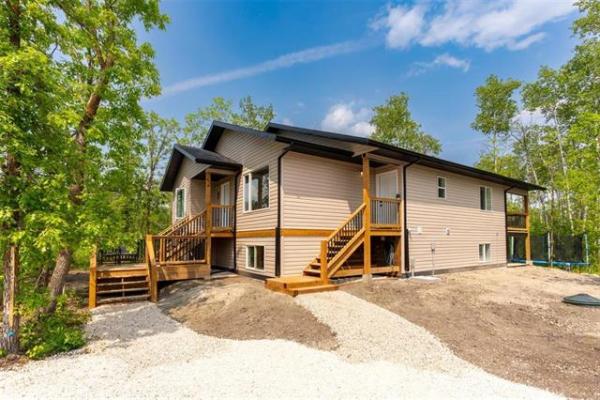QUESTION: I was hoping that you might be able to offer an opinion on a frost problem that has cropped up. I believe the attached photos will help you see what I am referring to.
This patio door, which is a Pella door, was installed this past fall. In doing our research, the Pella door seemed to be the best of the patio doors on the market.
Since the cold spell has hit we have noticed frost as noted in the pictures. We contacted the installer and he is suggesting that our humidity level in the house is the likely cause. I do not agree with this as I believe the frost is caused by air leakage.
The relative humidity level in our house is about 28 per cent. We do not have any condensation or frost on any of our other windows in the house, even ones covered with drapes. There are no drapes or other obstructions on or in front of this door. We do not use this door in the winter and it has not been opened.
We would appreciate your thoughts on this issue.
Gord and Dianne Smith, Winnipeg
ANSWER: I also agree with you that the problem with the ice and frost on your new door is not due to high relative humidity in your home, although that is often the cause. I think there is a fairly simple explanation for the ice, but the repair can vary greatly between relatively simple to very difficult depending on the design or your patio door.
At the risk of stereotyping both window- and door-installation companies and patio-door manufacturers, they will almost always try and blame defects in their products on the home or homeowners. In many cases, it is either the products or the installation that is to blame for moisture-related issues.
Most moisture complaints from homeowner about windows and doors fall into two general categories. The moisture is normally due to either poor weatherstripping or sealing of the units or improper insulation and sealing around the replacement units in the exterior wall assembly. The frost you are seeing is due to condensation and freezing of the warm, relatively moist air in your home as it hits the door. This can only happen if the door surface is below freezing or excessive cold air is leaking in, causing the house air to condense and freeze before more warm air can dry the condensation.
The simple fact that patio doors have large sliding sections makes them prone to air leakage. Most new doors and windows that are not sliders have large compression-style weatherstrips that seal well when the units are closed and locked. This prevents cold air from leaking in and warm from leaking out around the sash or the door slabs, in most cases. With sliding units the weatherstrips tend to be brush-style ones that seal the air space around the doors somewhat, while allowing good movement of the door. The problem with this style of weatherstripping is that it is comprised of thousands of small, individual fibres, which may allow air to pass through the many openings between the fibres. This is unlike the aforementioned plastic or neoprene compression weatherstrips, which become an impenetrable gasket when the window or door is closed and the cam locks closed to pull the door or sash tight. While the nature of the weatherstripping and thus the design of the patio door may be the underlying cause of the air leakage and ice, there may be an easy remedy to minimize the air leakage. Most patio doors have adjustment screws or mechanisms in the bottom rail to alter the height of the wheels that the door rolls on. These adjustment fasteners may be found behind small plastic caps or plugs on the inner surface or other areas on the door. While these are normally adjusted individually to compensate for a floor that isn't level or door frames not plumb or out of square, they also can be turned to reduce the gap underneath the door itself. Reducing this gap by lowering the door-wheel height may allow the sweep-style weatherstrips to contact the door more fully, preventing excessive cold air intrusion through the individual fibres. Also, these adjustments can be done to change the vertical sections of the sliding doors, improving contact with the side jambs that also have weatherstripping installed to close air gaps.
After looking at the pictures that accompanied your inquiry, these areas are exactly where the frost and ice seem to be forming. I would call the manufacturer's agent or the installer and insist they send down a trained service person to adjust the door and latching system to see if the gaps can be reduced. This service call should also include an inspection of the door for small shipping blocks or screws, installed at the factory to minimize movement of the door during transportation to the jobsite. I often see these small items on windows in newer homes and they need to be removed for the units to properly seal. If no solution can be found for your ice and air-leakage issues after proper adjustment and service of your new patio door, the answer may be simply the door itself. While your research may have led you to this specific brand of door, the ratings you have seen may not have been applicable in our climate. Older Pella windows were indeed the highest quality when it came to materials and construction, but their unique vented glazing system was not very well suited to our harsh winters. Later models, like yours, now have proper sealed units for the glazing but the weatherstripping and hardware still may not be designed to handle our - 30 C weather.
Ari Marantz is the owner of Trained Eye Home Inspection Ltd. and the president of the Canadian Association of Home & Property Inspectors -- Manitoba (www.cahpi.mb.ca). Questions can be emailed to the address below. Ari can be reached at (204) 291-5358 or check out his website at www.trainedeye.ca.
trainedeye@iname.com



